Painting the flesh
Artists' Techniques
In flesh areas, a thin grey wash was laid down as an under-layer. An even pink base, a mixture of lead white, red earth and vermilion, was applied next. The main facial features, the nose, mouth and eyes, were outlined with brown, iron-based ink, and highlighted in an organic red pigment. The eyes were further defined with small black dots.
The same brown ink and red pigment were used to model the skin texture with vertical strokes. They were either used sparingly to create youthful, porcelain-smooth complexions or laid down in a dense pattern, resulting in the ruddy faces of older men. Greenish-brown earth was used for shaded areas and lead white for highlights. Finally, a thick impasto of lead white was applied to simulate the texture of bushy eyebrows and in some cases to provide highlights on the cheeks.
Despite general similarities, the work of different artists can be distinguished in the magnified images captured with an optical microscope, by slight differences in the way they blended the paint layers, outlined facial features, and shaped faces, eyes, noses and lips.
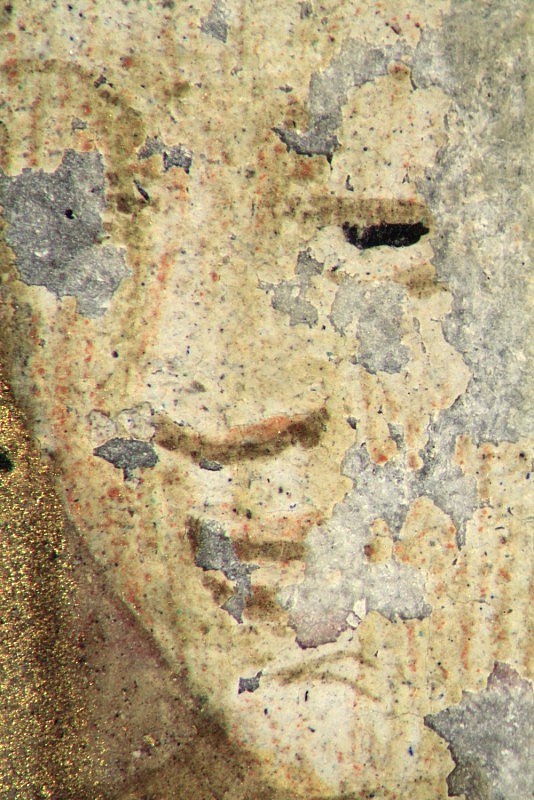
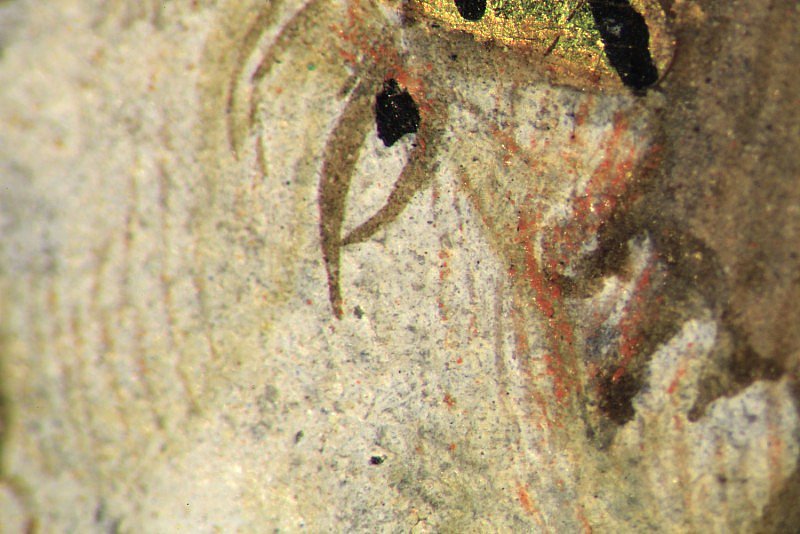
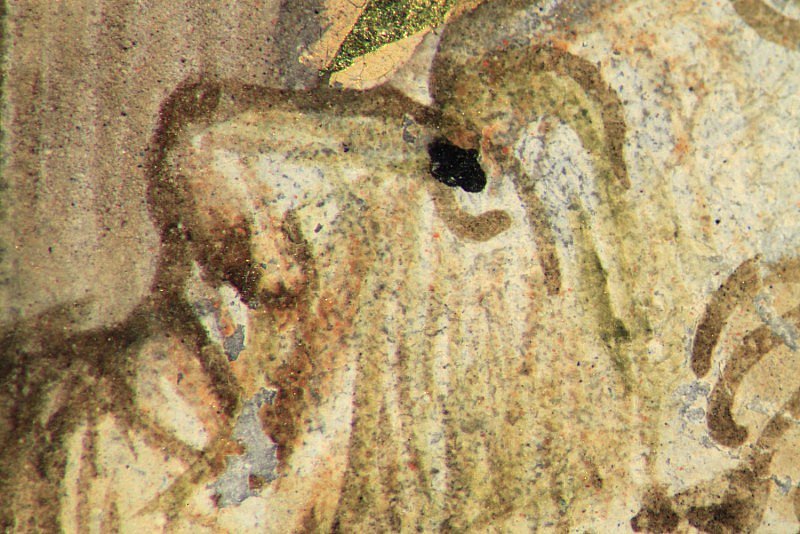
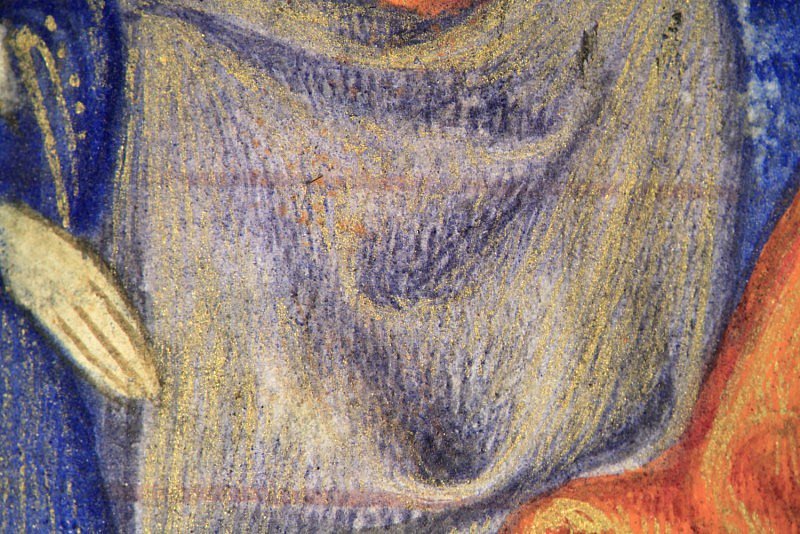
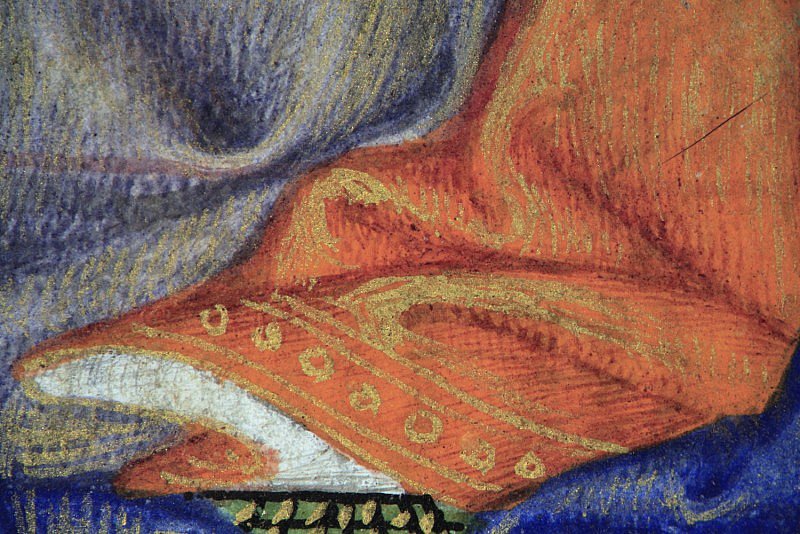
Pentecost (Hours of the Holy Spirit, Matins)
This miniature was painted by an artist who was responsible for most of the marginal images in the Pilgrimage of the Human Life cycle. His favourite lead-tin yellow pigment, which has a slightly green tinge, can be seen both in the Pentecost miniature and in the marginal image. This artist was a close associate of the Giac Master and had ready access to his designs. He replicated the Giac Master’s typical architectural setting and tiled floor, but introduced a more convincing sense of perspective in both. The arms of Isabella Stuart have been added to the border.